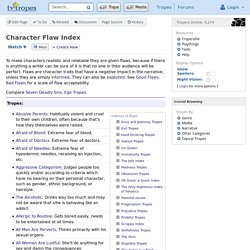

Writing Comedy Sketches That Sell. By Brian LuffThe Internet Writing Journal, July 1999 Introduction The first thing to do before you sit down and try and write a sketch, is to watch and read as many other comedy sketches as you can.

Go to the library, borrow books, videos, tapes, records, lock yourself away and watch sketches until they come out of your ears. Study the masters of the art. Monty Python, Mel Brooks, The Fast Show, Saturday Night Live, French & Saunders, etc etc. Research While you're watching, make notes. Getting Started Never sit down in front of a blank sheet of paper. Write the titles at the top of three separate pages, and then, working on all three sketches at the same time, write down everything you can think of connected to each of the three subjects. 1) Choose a setting.
Brainstorming Bounce comedy ideas off the people around you. Where do the Ideas Come From? If you're stuck, the best place to go looking for ideas for sketches is in big reference books like, for example, Halliwell's Film Guide. Layout. The Universal Shapes of Stories, According to Kurt Vonnegut. Steve Martin Shows You How to Write a Sketch Show in His Rare TV Special. The Paley Center for Media, which has locations in both New York and LA, dedicates itself to the preservation of television and radio history.

Inside their vast archives of more than 120,000 television shows, commercials, and radio programs, there are thousands of important and funny programs waiting to be rediscovered by comedy nerds like you and me. Each week, this column will highlight a new gem waiting for you at the Paley Library to quietly laugh at. (Seriously, it’s a library, so keep it down.) This might be heresy to some of you, but I just can’t get into the early seasons of SNL. I can appreciate their importance and the talent of the writing and cast, but whether it’s a time issue or a generational thing, watching that Season One DVD set felt like more of a chore than a treat.
I’m willing to attach this lofty claim to an NBC special entitled Steve Martin: Comedy is Not Pretty. The Absurd Sketch Advertisement The Satirical Sketch. How to Develop a Character for a Story (with Character Descriptions) Main/Character Flaw Index. To make characters realistic and relatable they are given flaws, because if there is anything a writer can be sure of it is that no one in their audience will be perfect.

Flaws are character traits that have a negative impact in the narrative, unless they are simply informed. They can also be exploited. See Good Flaws, Bad Flaws for a scale of flaw acceptability. Compare Seven Deadly Sins, Ego Tropes. Abusive Parents: Habitually violent and cruel to their own children, often because that's how they themselves were raised. Character Archetypes. RanGen - Random Generators For All! Freytag's Pyrmaid. Character Archetypes. 8 ½ Character Archetypes You Should Be Writing. Here’s the thing about character archetypes: everybody’s got his own take.

Do you run with Joseph Campbell’s gazillion and one Jungian archetypes? How about Dramatica’s double quad of eight archetypes? Or maybe screenwriter Michael Hauge’s simple offering of four main players? Nothing wrong with running with all of them. The fact that archetypes are both universally applicable and yet endlessly varying provides authors with both structure and flexibility. Today, we’re going to explore my take, which is primarily based on Dramatica’s eight characters. (Featured in the Structuring Your Novel Workbook.) 1. This one doesn’t need much explanation. The main actor.The person most greatly affected by the Antagonist.The person whose reactions and actions drive the majority of the plot.The person with whom the readers will identify most strongly.The person whose inner journey, as influenced by the outer conflict, will be the most obvious manifestation of your story’s theme.
Examples 2. The 12 brand archetypes all successful businesses are built on. Successful brands have a strong sense of identity, one that mirrors the hopes and aspirations of their customers.

But finding your voice – especially as a small business – can be difficult. And expensive. Identifying your brand archetype from this list will save you time and money and connect you instantly to your audience. Why do so many films seem to have the exact same characters in them? The rugged action hero with a tortured past. These characters seem to pop up all the time in books and films – and in the ways we categorise real people too.
These all-too-familiar characters are called Jungian archetypes. Jungian archetypes have been adopted and examined by all sorts of groups. The Universal Shapes of Stories, According to Kurt Vonnegut. 8 Classic storytelling techniques for engaging presentations. Periodic Table of Storytelling.